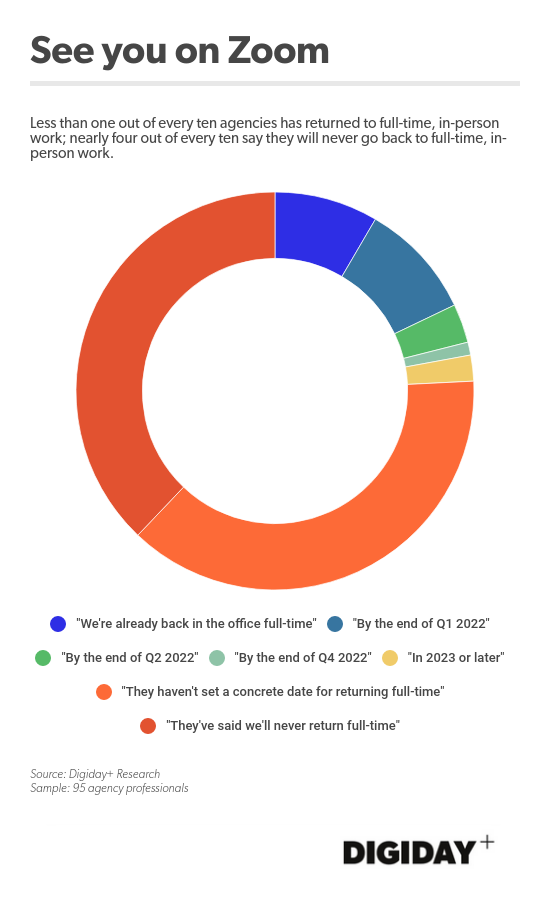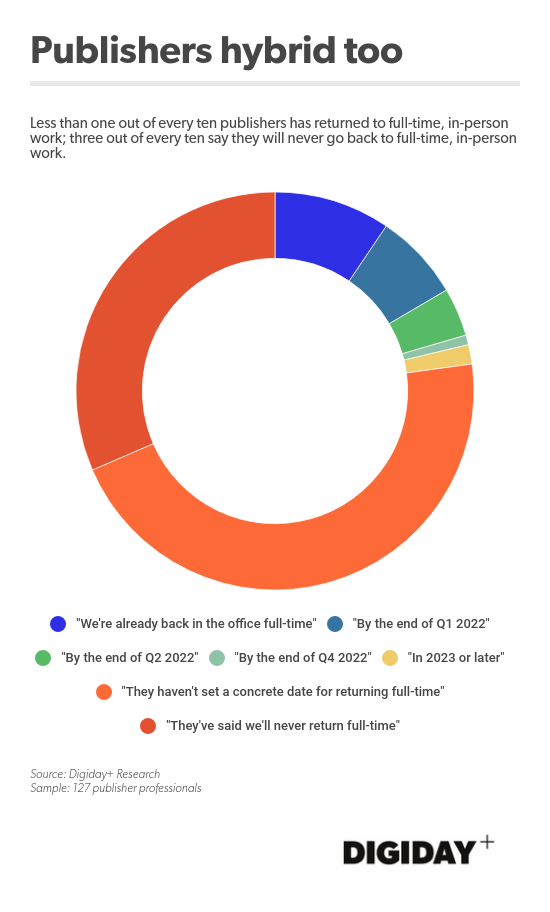Digiday+ Research: Agency, publisher return-to-work plans trending away from full-time office presence

This research is based on unique data collected from our proprietary audience of publisher, agency, brand and tech insiders. It’s available to Digiday+ members. More from the series →
As the coronavirus pandemic continues to upend traditional work patterns a full two years after it began, and the Great Resignation recasts the ranks for employees across media, marketing and advertising technology sectors, agencies, for one, are settling into to a hybrid future.
A Digiday+ Research survey in February of agency and publishing execs found that 40% of the 95 agency professional respondents said their employers will never return to full-time, in-person work schedules. Less than one in 10 have physically returned to work full time.

And on the publisher side, 30% of 127 publishing professional respondents said their employers will never return to full-time, in-person work schedules. As with agencies, less than one in 10 have returned to fill-time, in-person work.

More in Media

Condé Nast and Hearst strike Amazon AI licensing deals for Rufus
Condé Nast and Hearst have joined the New York Times in signing a licensing deal with Amazon for its AI-powered shopping assistant Rufus.

Media Briefing: AI payouts may be entering a new era
AI compensation is evolving — and new models, not just publisher demands, are driving the shift beyond flat-fee licensing.

In Graphic Detail: AI platforms are driving more traffic — but not enough to offset ‘zero-click’ search
Here are five graphs that reveal the major trends emerging in the world of AI and ‘zero-click’ search, and what it means for publishers.








